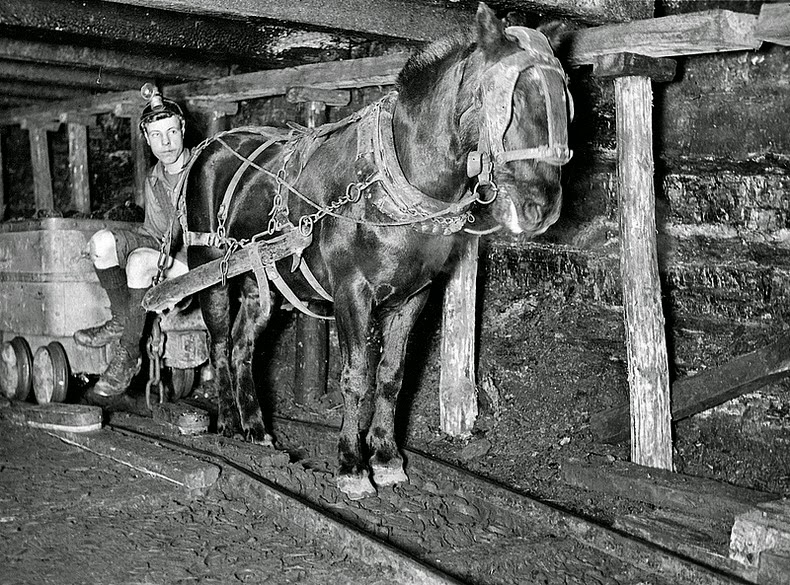Sultan the Pit Pony is a massive 200 metre raised-earth sculpture in Caerphilly, in South Wales. The sculpture is affectionately named “Sultan” after a well-loved pit pony that worked in the local mines hauling tubs of coal. The sculpture itself is built out of coal shale from those mines, as a reminder of an industrial past that changed Britain, and the world, forever. Coal was the fuel of the Industrial Revolution that put Britain at the forefront for over 100 years in the 19th and early 20th centuries. Coal provided the necessary power source for steam engines which became one of Britain’s most significant contributions to human history.
Ponies, horses and mules were commonly used in underground coal mines in North America and Europe, from the mid-18th until the mid-20th century. Previously, children and women were employed to lug or drag coal out of the mines. As the mines became deeper and distances became greater, they were replaced with “pit ponies”.
Sultan The Pit Pony was designed by Mick Petts using roughly 60,000 tonnes of coal shale. Photo credit: The Geological Society of London
Pit ponies were the most regulated horses in the entire British Isles, being over seen by the National Coal Board and subject to many rules and requirements. Typically, they would work an eight-hour shift each day, during which they might haul 30 tons of coal in tubs on the underground narrow gauge railway. As the ponies got older, their daily shift might be cut back to a mere 4 hours of work. The ponies stayed almost entirely underground where they were fed on a diet with a high proportion of chopped hay and maize, coming to the surface only during the colliery's annual holiday. Since pit ponies belonged to the mining companies, they were highly valued capital, who were generally far better looked after by the company management than the coal miners were.
At its peak around 1913, there were some 70,000 pit ponies working below ground in Britain. In later years, mechanical haulage was introduced on the main underground roads, and ponies were confined to the shorter runs from coal face to main road. As of 1984, 55 ponies were still in use with the National Coal Board in Britain, chiefly at the modern pit in Ellington, Northumberland. When Ellington closed for the first time in 1994, there were four pit ponies working. Probably the last colliery horse to work underground in a British coal mine, "Robbie", was retired in May 1999.
I tried but couldn’t find any information on “Sultan”, the pony that worked in Penallta colliery and after whom the sculpture is named. The Penallta colliery closed in 1991. The derelict land was transformed into a community park, where in addition to “Sultan”, there are numerous cycle trails, walking trails, two fishing lakes a marsh and a business park, with plans to retain the headgear of the old mining shafts in a new housing development.

One of a series taken by Johnny Briggs who was employed by The Ashington Coal Company. There's no date with this image but it would have been between 1930-45. The colliery also remains unknown as the company owned several at that time. Photo credit
Coal Miners and a pit pony, Hunter Valley, NSW, Australia. This image was scanned from a negative in the Bert Lovett collection. Photo credit
Photo credit: Steve Brockett
Photo credit: Steve Brockett
Photo credit: Steve Brockett
Photo credit: Steve Brockett
Photo credit: Steve Brockett
Sources: Medium.com / Wikipedia / Equi Culture / Telegraph



















Wonderful! Hard working ponies! Bless their hearts.
ReplyDelete---sage
What is coal shale?
ReplyDelete